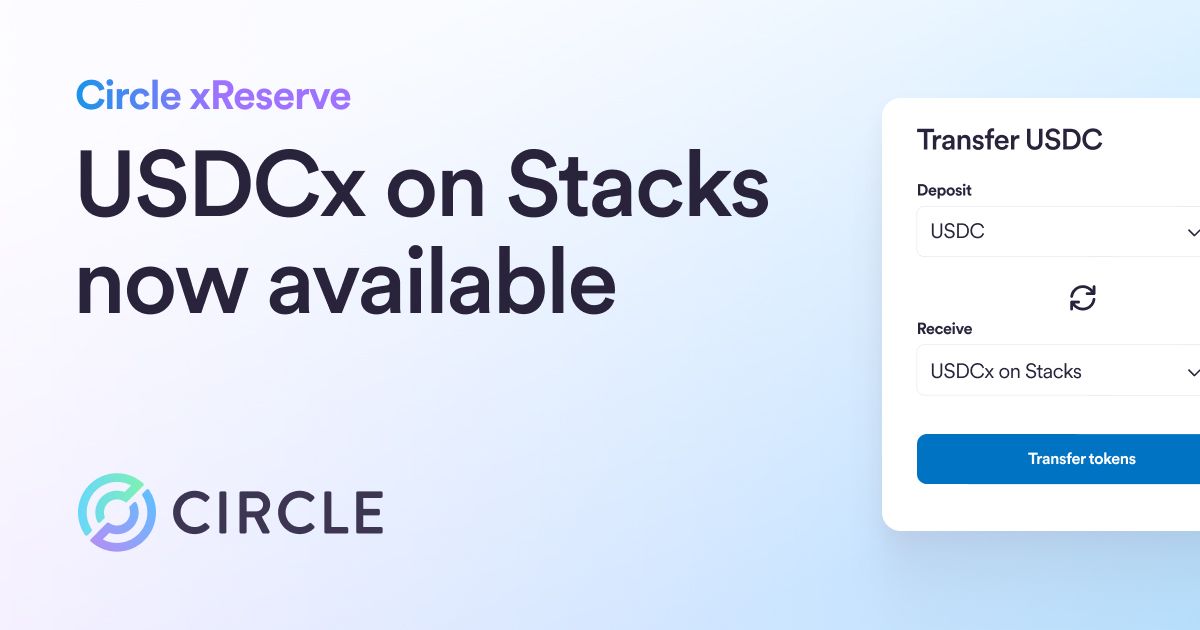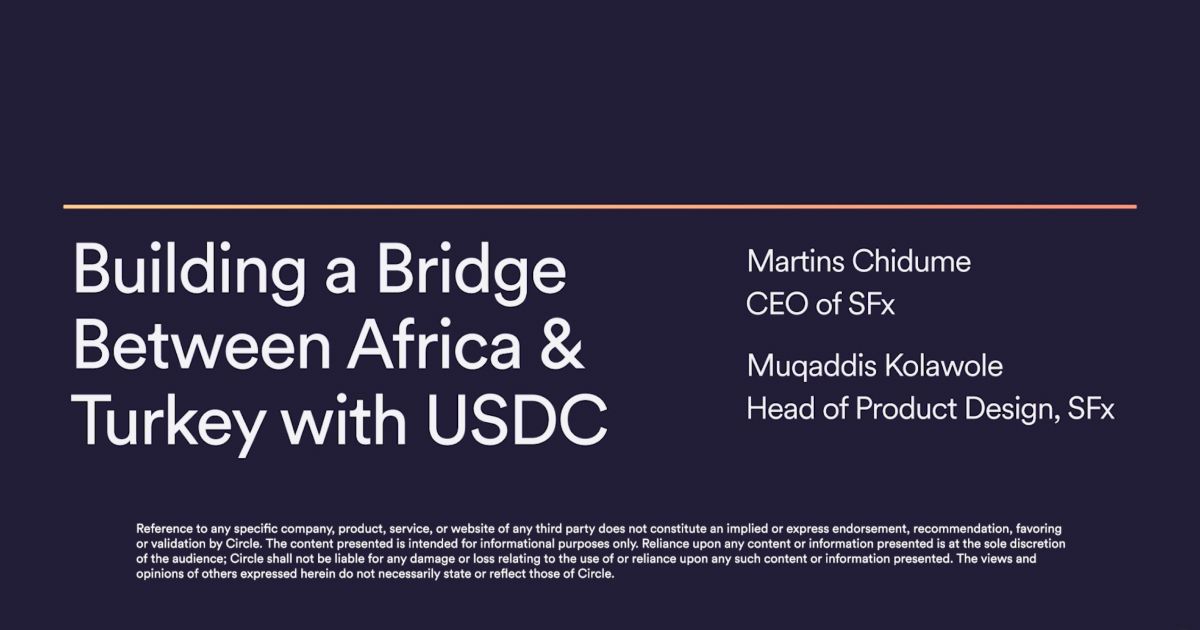Learn about Visa using USDC, staying on the cutting edge of payments, and what the future holds for financial infrastructure in a crypto-powered world.

Last week, Visa Global Head of Fintech Terry Angelos chatted on Clubhouse with leading minds behind the recent launch of Visa card payments using USDC.
Visa Director of Global Crypto Products Raj Prekh, Visa Head of Crypto Cuy Sheffield, Anchorage Co-founder and President Diogo Mónica, Crypto.com CEO Kris Marszalek, and Circle Co-founder and CEO Jeremy Allaire shared their thoughts on using cryptocurrencies for Visa settlement, tectonic shifts underway in the global payments industry, and what the future holds for blockchain-based financial infrastructure.
A New Frontier for Visa Settlement
It’s incredibly exciting to see Visa, one of the largest and most recognizable payment businesses in the world, integrating USDC into settlement infrastructure. But what does that mean, exactly?
“The main announcement we made on Monday is that Visa now enables USDC as a settlement currency with our partners. We’re now starting to enable crypto wallets, which we effectively see as a new class of issuers, to create card programs that settle with us directly over the Ethereum blockchain,” Prekh said.
“This is a real expansion of how we move money today. We have a sophisticated treasury operation that helps move millions of dollars to all our banking partners, and now that we have the support for Etherum, we can receive USDC directly for settlement or card transactions.”
Cuy Sheffield laid out how even with improved back-end performance and the ability to draw on USDC balances, consumer-facing aspects of the familiar Visa experience won’t be impacted.
“This update is something that we’ve done to make it easier for crypto platforms to issue cards, and the consumer experience doesn’t change. Once a crypto platform can issue a card, a consumer can spend from a balance of their crypto at any of the 70 million merchants that accept Visa,” he said.
“There’s no difference to the merchant, and there’s no difference to the consumer. You still have the experience that you’re used to, but now you can use your stored crypto balance to pull from.”
Part of what made Circle a natural choice to partner with Visa is the fully-reserved backing of each USDC digital dollar, eliminating volatility risk associated with most other cryptocurrencies.
“We ended up building a model where we could allow people to transfer dollars to a traditional bank account, then put those dollars in a reserve account and issue digital currency units for each dollar that was deposited. You effectively have a reserve of dollars backing individual units of USDC, that then become available as tokens that can be transacted on public blockchain networks,” Allaire said.
“The ultimate benefit is that you’re uploading your dollars to the internet, going from commercial bank electronic money into a digital currency form. It unlocks the benefits of these public blockchains, and now we see Visa doing amazing work taking advantage of the speed and ease of that settlement between Crypto.com’s service and businesses on the other end that needs to receive payment.”
Visa’s Crypto Partners
Visa has been at the forefront of payments and value transfer for decades, and crypto offers fertile ground for expanding that role for within the next generation of financial services.
“We want to make it easier for crypto partners to be able to connect to the Visa network, and issue these cards. What we’ve seen is that this emerging class of issuers are building their businesses on crypto, many of them are paying their employees in crypto, they’re paying vendors in crypto,” Sheffield noted.
“We’re seeing that digital currencies are just becoming another form factor and way to represent fiat, so we’re focused on Visa making it easier for this type of partner by letting them settle with us in the digital currency they’re operating their business in, instead of always requiring them to convert back to traditional fiat currency and deposit that in a bank account before they can actually settle their obligation with Visa.”
Being on the cutting edge of payments infrastructure also means being ready to accommodate new technology as it emerges.
“One of the reasons Visa partners with Anchorage is that we’re asset agnostic and we’re blockchain agnostic. Today it could be USDC on Ethereum, tomorrow it could be USDC on Solana or any other network. It’s not just about one asset and one blockchain, it’s about a different way of transferring value and being faithful to the vision of electronic value exchange,” Prekh said.
“It’s going to be a long time before most merchants will be able to directly accept a public blockchain transaction at the point of sale. Particularly in a multichain world, getting merchants to add new payment providers, upgrade terminals, and other things to add these new payment methods adds cost and complexity. We think it makes sense to be able to have the option to separate the stored currency value from the underlying public blockchain that it runs on, so you can pay with USDC and its authorized instantly over the Visa network.”
Building the Future
The future of crypto is multichain, and it goes far beyond improved payment infrastructure. Crypto companies are already starting to reap the benefits, laying the groundwork for larger corporations to follow close behind.
“For us the benefits are that we can stay in crypto, we can settle quickly and cost efficiently, and we can optimize treasury management because we don’t have to keep large balances in fiat for this purpose. What’s most exciting about USDC support is that it sends a very strong signal to all financial institutions that it’s okay to do business in stablecoins,” Marszalek said.
“Visa is leading the charge here, and there’s a flurry of activity at other networks around the world asking themselves ‘Where are we on this topic?’ This will make it easier for us as a cryptocurrency company to do business with multiple partners, and it moves us closer to a future where everything is on-chain.”
Blockchain technology is advancing more rapidly than any class of technology before it, with the potential to upend industries a few years old or that have been around for generations.
“We now have USDC on four major blockchains, and it will likely be on 10 or 15 over time. That’s because we’re seeing blockchains that are solving problems like getting to 50 or 10,000 transactions per second. We’re seeing blockchains provide settlement finality not in five minutes, but in five seconds, or 500 milliseconds. We’re seeing new computing architecture for these blockchains that might rival what you get out of an AWS server. There’s so much happening there, and digital dollar stablecoins need to be able to support that heterogeneous nature of platforms,” Allaire explained.
“I’m interested in how this connects to mainstream corporations. A great deal of the activity and interest in things like stablecoins has been anchored in the crypto markets, but it really feels like we’re on the cusp of connecting to internet businesses more broadly. We’re working towards really making this approachable and accessible to the average business that’s connected to the internet and making USDC work for them. I think if we can do that and make it accessible to millions or billions of people, it can bring a pretty profound shift in how the financial system works.”





